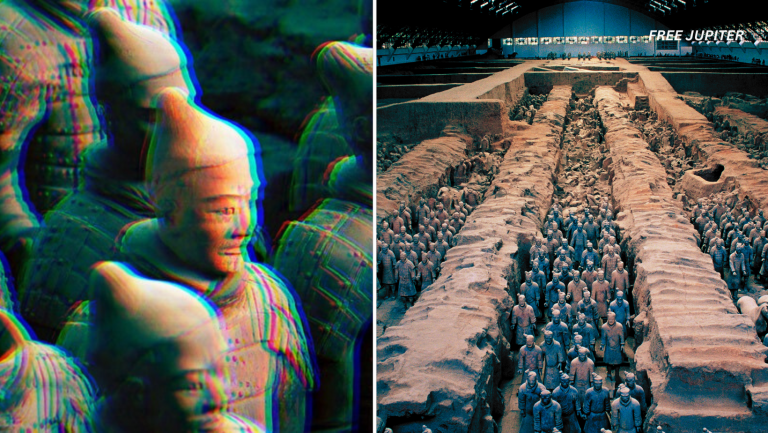For the first time, a remarkable behavior has been observed in one of the world’s tiniest birds—an act of mimicry so unexpected, it has reshaped what is known about avian survival strategies in tropical ecosystems. In the dense forests of Panama, a chick of the white-necked Jacobin hummingbird has been documented engaging in a peculiar and, until now, unseen form of self-defense. Rather than fleeing or remaining still, the chick displayed a strange twitching and head-shaking behavior, which appeared to serve as a mimicry tactic to resemble a venomous caterpillar.
An Unfamiliar Sight Among Familiar Surroundings
This discovery was made by biologists Jay Falk and Scott Taylor, who were conducting research in Soberanía National Park. The finding has since been detailed in a peer-reviewed paper published in Ecology on March 17, where this phenomenon was formally recorded and described for the first time in hummingbirds.
It was during an early morning walk through Panama’s tropical rainforest when Falk and Taylor first encountered the chick. Barely a day old and scarcely larger than the tip of a finger, the tiny bird was seen nestled in a discreet, camouflaged nest constructed from natural materials. Upon nearing the nest, both scientists were startled to see the chick begin to jerk its body and shake its head in a rhythmic motion.
Mimicking Danger: A Clever Disguise
At first glance, the small creature appeared to be covered in brown fuzz, giving it a rough, hairy appearance that bore little resemblance to the sleek iridescence typically associated with hummingbirds. On closer inspection, however, it became clear that the coloration and motion bore a strong resemblance to certain toxic caterpillars found in the same region—an observation that prompted further investigation.
According to the team’s hypothesis, this behavior and appearance may represent an evolutionary adaptation for survival—a form of Batesian mimicry. This strategy involves harmless species adopting the visual or behavioral traits of harmful ones in order to deceive predators.
Read more: We Don’t Give ‘Uglier’ Animals The Love That They Need — Leading to Conservation Concerns
A Forest Filled with Perils
The forest environment, rich in biodiversity, is also rife with danger. Countless threats lurk among the foliage, from predatory birds and snakes to curious monkeys and predacious insects. For a fragile, immobile chick left alone in a nest, vulnerability is immense. It is within this high-risk backdrop that mimicry offers an evolutionary lifeline.
Falk, who also holds a research position with the Smithsonian Tropical Research Institute, noted that little is known about the nesting habits of birds in tropical regions. “We’re only beginning to understand what kinds of survival strategies are being used by birds in these environments,” Falk remarked.
The Nest That Started It All
This remarkable observation came after an initial sighting of a female white-necked Jacobin incubating her egg in a well-hidden nest. The discovery was made by Falk’s Smithsonian colleague Michael Castaño and Sebastian Gallan-Giraldo of the University of Antioquia, Colombia. The nest itself had been expertly disguised with plant fibers and materials, blending seamlessly with its surroundings.
Over the weeks that followed, the research team maintained a watchful eye on the nest. When the egg finally hatched, they were surprised to find that the chick was not the typical naked and helpless creature common to most hummingbird hatchlings. Instead, this one emerged with long, brown, hair-like feathers that gave it an uncanny resemblance to the twigs and mosses lining the nest.
The Movement That Sparked a Theory
What drew the most attention, however, was the chick’s peculiar jerking movements. These spasmodic twitches and abrupt head swings were unusual enough to be immediately flagged as significant. Videos of the behavior were quickly shared among colleagues, many of whom independently concluded that the chick closely resembled a caterpillar. “The moment we started sending the footage around, nearly everyone said the same thing: ‘That looks like a caterpillar,’” said Taylor.
A Real-Time Test: Predator vs. Pretender
The mimicry became even more compelling when a real threat entered the scene. On the second day after hatching, a predatory wasp approached the nest while the mother bird was away. As the wasp hovered, seemingly assessing the situation, the chick responded with its now-familiar twitching and swaying behavior. After only a few moments, the wasp departed without incident, suggesting that the mimicry had served its intended purpose.
Read more: Iceberg Breaks Off Of Antarctica, Revealing Strange Tentacled Creatures Hidden Underneath
A Pattern Seen Before in the Amazon
Interestingly, this wasn’t the first time mimicry had been suspected among tropical birds. A previous study had proposed that the cinereous mourner, a small Amazonian songbird, may imitate the appearance and behavior of toxic caterpillars native to the same region. These caterpillars are often bright orange and possess irritating hairs, traits that serve as natural deterrents. The chick of the cinereous mourner shares both the coloration and the head-waving motions, further supporting the idea that mimicry may play a significant role in avian defense strategies.
Nature’s Warning Signals
In the forests of Panama, many caterpillar species are equipped with dense brown hairs capable of delivering painful stings. Some are even toxic enough to fatally injure or kill their attackers. When threatened, these caterpillars often engage in head-shaking behaviors that make them appear larger and more intimidating. The hummingbird chick’s movements and fuzzy exterior may have evolved to mimic exactly these characteristics.
Batesian Mimicry With a Twist
While Batesian mimicry has been well-documented across the animal kingdom, it typically occurs between more closely related species—often within the same taxonomic group. But this case presents a unique twist.
“What makes this so interesting is that a vertebrate—this hummingbird chick—appears to be mimicking an invertebrate, a caterpillar,” Taylor explained. “That’s a much more unusual kind of mimicry than we typically see.”
What Comes Next for the Research
Despite the promise of this discovery, the research remains in its early stages. The team emphasized that this account is based on a single documented observation. As such, more data will be needed before definitive conclusions can be drawn.
Going forward, the researchers plan to conduct experiments to test their theory. One idea involves placing artificial chicks with varying appearances and behaviors into simulated nests to see which ones attract predators and which ones are left alone.
Additionally, they hope to engage the public—particularly birdwatchers and citizen scientists—in contributing to the search. By encouraging more people to observe and document nesting behavior among hummingbirds, it may be possible to uncover whether such mimicry is an isolated case or part of a broader, previously unnoticed trend in tropical avian evolution.
Read more: Small Brazilian Frog May Be The First Pollinating Amphibian Known To Science
A New Chapter in Avian Behavior
Until now, hummingbird chicks were assumed to be largely helpless, relying almost entirely on parental care and the camouflage of their nests for protection. But this new insight has added a surprising layer to the understanding of their survival tactics. Even in their earliest stages of life, it seems these tiny creatures may possess complex strategies to outwit their enemies.
The revelation also highlights how much remains unknown in the world’s tropical ecosystems. In regions like Panama, where biodiversity thrives and the struggle for survival is constant, nature continues to surprise even the most seasoned scientists.
More Secrets Waiting to Be Discovered
In the end, what began as a simple walk through the rainforest led to a groundbreaking observation—one that may shift how bird development and predator-prey dynamics are viewed, not just in hummingbirds, but potentially across other bird species as well. The forest still holds secrets, and with every step taken deeper into its heart, there’s always the chance of discovering something extraordinary.










